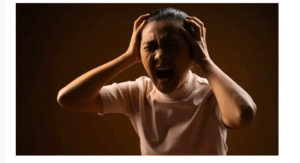
Why You Might Ignore Red Flags
Are you ignoring warning signs but still continuing to date someone despite major red flags? If so, there could be
The web is a treacherous place.
A website’s author may not be its author. References that confer legitimacy may have little to do with the claims they anchor. Signals of credibility like a dot-org domain can be the artful handiwork of a Washington, D.C., public relations maven.
Unless you possess multiple Ph.D.’s – in virology, economics and the intricacies of immigration policy – often the wisest thing to do when landing on an unfamiliar site is to ignore it.
Learning to ignore information is not something taught in school. School teaches the opposite: to read a text thoroughly and closely before rendering judgment. Anything short of that is rash.
But on the web, where a witches’ brew of advertisers, lobbyists, conspiracy theorists and foreign governments conspire to hijack attention, the same strategy spells doom. Online, critical ignoring is just as important as critical thinking.
That’s because, like a pinball bouncing from bumper to bumper, our attention careens from notification to text message to the next vibrating thing we must check.
The cost of all this overabundance, as the late Nobel Laureate Herbert Simon observed, is scarcity. A flood of information depletes attention and fractures the ability to concentrate.
Modern society, wrote Simon, faces a challenge: to learn to “allocate attention efficiently among the overabundance of sources that might consume it.”
We’re losing the battle between attention and information.

As an applied psychologist, I study how people determine what is true online.
My research team at Stanford University recently tested a national sample of 3,446 high school students on their ability to evaluate digital sources. Armed with a live internet connection, students examined a website that claims to “disseminate factual reports” on climate science.
Students were asked to judge whether the site was reliable. A screen prompt reminded them that they could search anywhere online to reach their answer.
Instead of leaving the site, the vast majority did exactly what school teaches: They stayed glued to the site – and read. They consulted the “About” page, clicked on technical reports, and examined graphs and charts. Unless they happened to possess a master’s degree in climate science, the site, filled with the trappings of academic research, looked, well, pretty good.
The few students – less than 2% – who learned the site was backed by the fossil fuel industry did so not because they applied critical thinking to its contents. They succeeded because they hopped off the website and consulted the open web. They used the web to read the web.
As a student who searched the internet for the group’s name wrote: “It has ties to large companies that want to purposefully mislead people when it comes to climate change. According to USA Today, Exxon has sponsored this nonprofit to pump out misleading information on climate change.”
Instead of getting tangled up in the site’s reports or suckered into its neutral-sounding language, this student did what professional fact checkers do: She evaluated the site by leaving it. Fact checkers engage in what we call lateral reading, opening up new tabs across the top of their screens to search for information about an organization or individual before diving into a site’s contents.
Only after consulting the open web do they gauge whether expending attention is worth it. They know that the first step in critical thinking is knowing when to deploy it.

The good news is that students can be taught to read the internet this way.
In an online nutrition course at the University of North Texas, we embedded short instructional videos that demonstrated the dangers of dwelling on an unknown site and taught students how to evaluate it.
At the beginning of the course, students were duped by features that are ludicrously easy to game: a site’s “look,” the presence of links to established sources, strings of scientific references or the sheer quantity of information a site provides.
On the test we gave at the beginning of the semester, only three in 87 students left a site to evaluate it. By the end, over three-quarters did. Other researchers, teaching the same strategies, have found similarly hopeful results.
Learning to resist the lure of dubious information demands more than a new strategy in students’ digital tool box. It requires the humility that comes from facing one’s vulnerability: that despite formidable intellectual powers and critical thinking skills, no one is immune to the slippery ruses plied by today’s digital rogues.
By dwelling on an unfamiliar site, imagining ourselves smart enough to outsmart it, we squander attention and cede control to the site’s designers.
Spending a few moments vetting the site by drawing on the awesome powers of the open web, we regain control and with it our most precious resource: Our attention.
To navigate the dangers of the web, you need critical thinking – but also critical ignoring by Sam Wineburg
Sam Wineburg

Reprinted from the Conversation.
The articles on Fitnesshacksforlife.org website is provided for reference purposes only, A public resource you can use for free. You should not take them as the sole source of medical direction. Fitnesshacksforlife.org does not accept payments or incentives from any of the individuals or organizations named in the articles, and the articles are not an endorsement of those parties or their products or practices. Do not ever disregard professional psychological or medical advice nor delay in any manner seeking professional advice or treatment because of something you have read on our site or social media. Fitness Hacks For Life is a registered 501(c)(3) non-profit organization, eligible to receive donations under the laws of the United States of America.

Are you ignoring warning signs but still continuing to date someone despite major red flags? If so, there could be

One of the most tell-tale signs to be aware of is when someone exhibits love and sex bombing. This is

3 skills that can help people learn to better control their anger. KEY POINTS Anger is a strong negative emotion
Fitness Hacks For Life is a registered 501(c)(3) .
A non-profit organization, eligible to receive donations under the laws of the United States of America.
Copyright © 2024 Fitnesshacksforlife.org | All rights Reserved | Disclaimer | Terms & Conditions | Privacy Policy & Cookies
400 NW Gilman Blvd.#787
Issaquah, WA 98027
360-504-8366

Agreed Declined